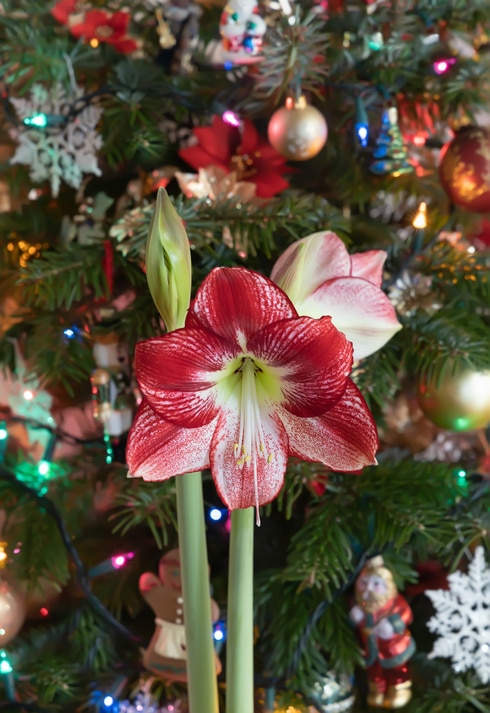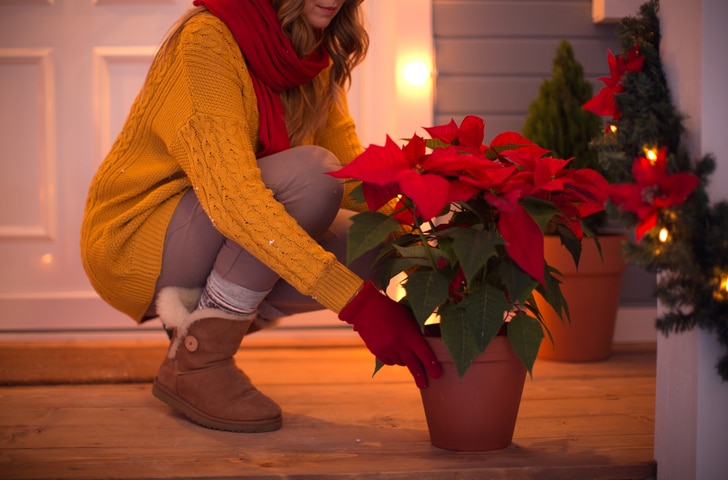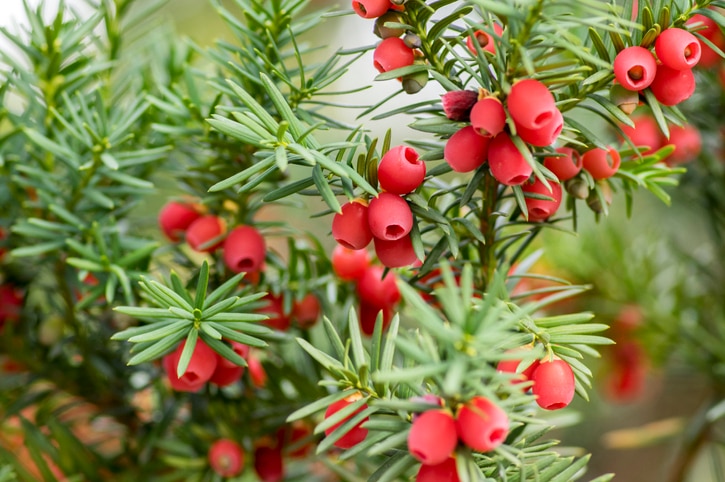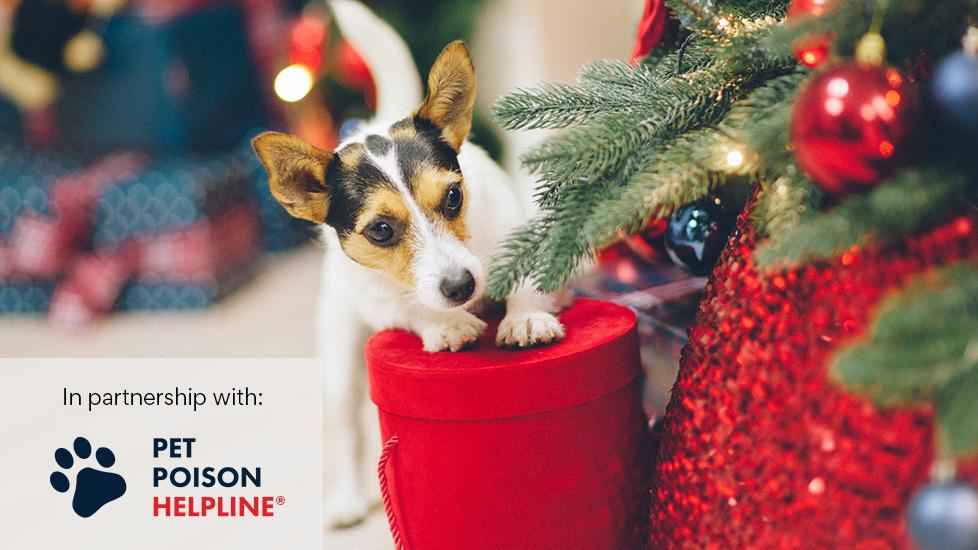7 Common Holiday Plants Toxic to Dogs
Ruslanshug/iStock via Getty Images Plus via Getty Images
Indoor plants can be a temptation for your dog to lick, chew, or dig up. During the holiday season there may be additional plants due to decorations, seasonal purchases, and gifting.
It’s important to keep in mind that some of these holiday plants are toxic to dogs, and can cause poisoning if your pup chews or ingests plant material.
While it is never recommended to let your dog eat plants inside or outside the house, here are a few specific holiday plants toxic to dogs.
Holiday Plants Poisonous to Dogs
Holly
Holly is known for its prickly and waxy green leaves. It can be used in holiday wreaths, garlands, and arrangements.

Ingestion of holly leaves or berries in dogs may cause gastrointestinal upset and lethargy if ingested by a dog. If a large amount of holly is ingested in your dog, they may have difficulty walking.
While the signs of holly poisoning in dogs are often mild and self-resolving, if your dog develops persistent vomiting, extreme lethargy making it difficult to sit up or stand, or has difficulty walking from eating holly, contact your emergency veterinarian or Pet Poison Helpline® at 855-764-7661 for next steps to take.
Mistletoe
Mistletoe is a leafy green plant that is used either alone or arranged with other flowers or plants for holiday decorations. There are two main types of mistletoe—American and European.

Fortunately, the American variety is less of a concern if your dog eats a few nibbles (one or two leaves or a few berries) from any part of this type of mistletoe plant. Your dog could develop symptoms including vomiting, diarrhea, and a decreased appetite.
However, if a large amount of American mistletoe is ingested or any amount of European mistletoe is consumed, an abnormal heart rate and high blood pressure may develop.
If this happens, your dog may appear weak, lethargic, or may not appear different at all, which can lead to a delay in treatment and potential heart and organ damage. Since your dog may show no obvious signs, contact your veterinarian as soon as possible.
Your vet can ensure your dog’s heart rate and blood pressure are normal and can prescribe any medications to resolve gastrointestinal upset if needed.
Christmas Trees
Christmas trees come in a variety of types, including spruce, pine, fir, and artificial. All of these types of trees can irritate a dog’s gastrointestinal tract and can cause tummy issues including vomiting, diarrhea, and a decreased appetite.

Sometimes, Christmas trees can cause intestinal blockage in dogs if the needles are ingested or the sticks of live trees are chewed on by a pup.
While these signs are often mild and resolve on their own, if any signs are apparent, they can result in your dog needing to see a veterinarian for an examination and treatment. When in doubt, contact your veterinarian for guidance.
Amaryllis
Amaryllis are flowers consisting of a long stalk and multiple green leaves that sprout from bulbs. These bulbs are often purchased for home decoration or gifted during the holidays.

Dogs can eat the petals, the leaves, and even the bulb itself.
Depending on which part of the plant and how much of the plant your dog ingests, they can develop gastrointestinal upset including vomiting and diarrhea that may contain blood, an abnormal heart rate or high blood pressure, tremors, or seizures.
If your dog eats an amaryllis plant, contact an emergency veterinarian or Pet Poison Helpline to determine next steps.
If possible, try to identify the plant, as many plants have similar names. This can help when speaking to the Pet Poison Helpline or your veterinarian to determine next steps.
Snowdrops
Snowdrops are white flowers that are considered early spring bloomers. While they can occasionally bloom outdoors as early as December in some regions of the United States, during the holidays they are more often found indoors either potted or in a bouquet.

The flowers, stems, and leaves are small and easy for a dog to chew on or ingest. When potted, their bulbs can also be enticing to dig up and chew.
Unfortunately, if your dog eats any part of a snowdrop plant they can develop gastrointestinal upset, abnormal heart rate and blood pressure, or even seizures. If your dog ingests any part of a snowdrop plant, contact your veterinarian or Pet Poison Helpline to determine next steps.
Poinsettias
Potted poinsettia plants are everywhere during the holiday season.

Since the floor is a common place for these plants, the leaves and flowers can be easily accessible for your dog to chew on or ingest. If this occurs, they may develop drooling, vomiting, or diarrhea.
The gastrointestinal upset that your dog develops will usually be mild and self-resolving, but if it persists for more than two to three episodes of vomiting or diarrhea, a visit to the veterinarian is recommended.
Yew
The yew is an evergreen that is usually planted outdoors or potted, but it is also used in wreaths, garlands, and floral arrangements during the holidays.

The yew may contain berries in addition to its waxy needles. If any part of the yew plant other than the red flesh of the berry is ingested by your dog, they could develop gastrointestinal upset. And if they eat anything more than a taste or a nibble, especially if they chewed on the branches, this may cause an abnormal heart rate, high blood pressure, tremors, or seizures.
Due to potentially severe signs of poisoning, if your dog eats a yew plant, contact your veterinarian or Pet Poison Helpline immediately for next steps.
What To Do If Your Dog Ingests a Toxic Holiday Plant
The holidays can be filled with busy schedules, travel, house guests, and other activities that alter a pet parent and a dog’s routine. In these situations, the most cautious household may still find out their dog ingested a potentially toxic holiday plant.
If a toxic plant ingestion does occur:
-
Immediately remove access to the plant so that your dog does not continue to ingest more.
-
Do not throw the plant away until it has been identified and your pet has received veterinary care.
Contact Pet Poison Helpline at 855-764-7661, where you will be connected with trained veterinary toxicology professionals who can help determine if you need to be concerned about your dog’s exposure to the plant and if so, what needs to be done next.
If possible, try to identify the plant (either through the purchase receipt, label on pot, or through image searching), as many plants have similar names. This can help when speaking to the Pet Poison Helpline or your veterinarian to determine next steps.
If your dog is showing any signs of difficulty breathing, difficulty standing or walking, seizures, or decreased alertness, seek immediate veterinary care.
